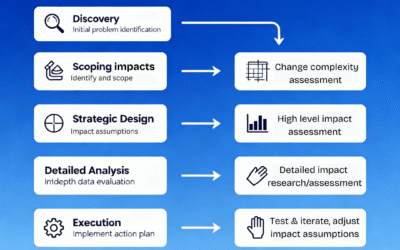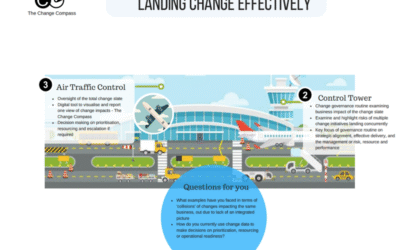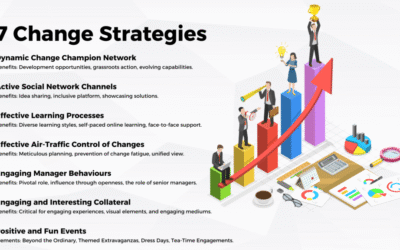How the sea inspires a different way of managing change

In taking my vacations in Hawaii I thought I would start a series of Change Management articles inspired by my trip to Hawaii. For those who have not been to Hawaii or have only stayed around Waikiki, the Islands of Hawaii is quite astoundingly beautiful. There is something magical about Hawaii that inspires the mind and soothes the soul. It’s welcoming people, amazingly jagged mountains, fantastic beaches, and sensational food is enough to bewitch any visitor.
As change or project managers we usually plan our approach in managing change from a top down perspective. We look at what senior executives would like employees to change, how much change is required, what benefits would be achieved through change, and which parts of the organization would need to change.
There is the usual focus that change leadership is critical and that without strong senior sponsorship that the initiative will fail. The senior leader is expected to have all the answers, to know exactly how to steer the employees towards an end state and be able to convince them the ‘what’ and the ‘why’ of the change. On top of this, if there is any resistance, the leader needs to identify these and overcome them in order to successfully drive the change successfully.
This all sounds like the standard recipe for change success does it not? So what is wrong with this?
Hawaii and leading change
When I was snorkelling in the North Shore of Oahu Island I was amazed at how much tropical fish I could see literally just metres from the beach. In fact, as soon as I had put my head down I could see the various sizes of amazing tropical fish. And the farther I go the more I notice at the abundance and variety of fish and coral around me.
When we surround ourselves purely with the top down approach of change, we start to develop a fixed mindset of how change should be done. Most of change literature resolves around adopting a top down approach. However, when we start to adopt a user mindset, an employee lense of change, we start to see things very differently.
The diversity of the ocean and the diversity of employees
Similar to the fish in the sea, there isn’t one type of employee. There are many types of employees with varying interests, backgrounds and preferences. It is easy for us to interview employees through conducting surveys and declare that we are intimate with employee concerns. However, in most situations there isn’t just one set of employee beliefs and concerns. Different employees have different concerns, just like in the ocean there is star fish, tetra, gold fish, carp, etc.
Whilst we cannot cater for every type of individual employee concerns and interests, it is also important to be able to see through impacted employees and what they are seeing. I became amazed at the wonderful world under the sea and how colourful and stunning it really is. If we really start to see through the different groups of employees, sense what they are sensing, we can really harness their power to drive change.
How do we leverage different employee groups in driving change
For example:
- For employees who are change champions and early adopters – How do we harness their influence and positivity to quickly spread the word, and advocate for the change?
- For those who have had bad change experiences in the past and are cynical and critical – How do we involve them closely to design the change process, so as to avoid any past mistakes and leverage to enhance success?
- For those who were agnostic and did not either support or resist the change – How do we give them accountabilities to progress and promote the change
- For those who strongly resist the change and actively counter against the change – How do we listen to them and address this head on. And leverage the influence of other employee groups such as the change champions?
- For those who tend to be overly cautious and do not feel confident when there is change – How do we actively identify them and spend more time to nurture their confidence, or leverage change champions to hand-hold them?
Dipping below the surface of what various senior stakeholder groups are looking for in change, we start to see a different picture of what employees see. Let’s open our eyes to the various colours, shapes, and sizes of the attitudes, preferences and feedback of employees. When we start to see the diversity of different types of employees and where they are at, we can then leverage them to better drive and position the change for success.





